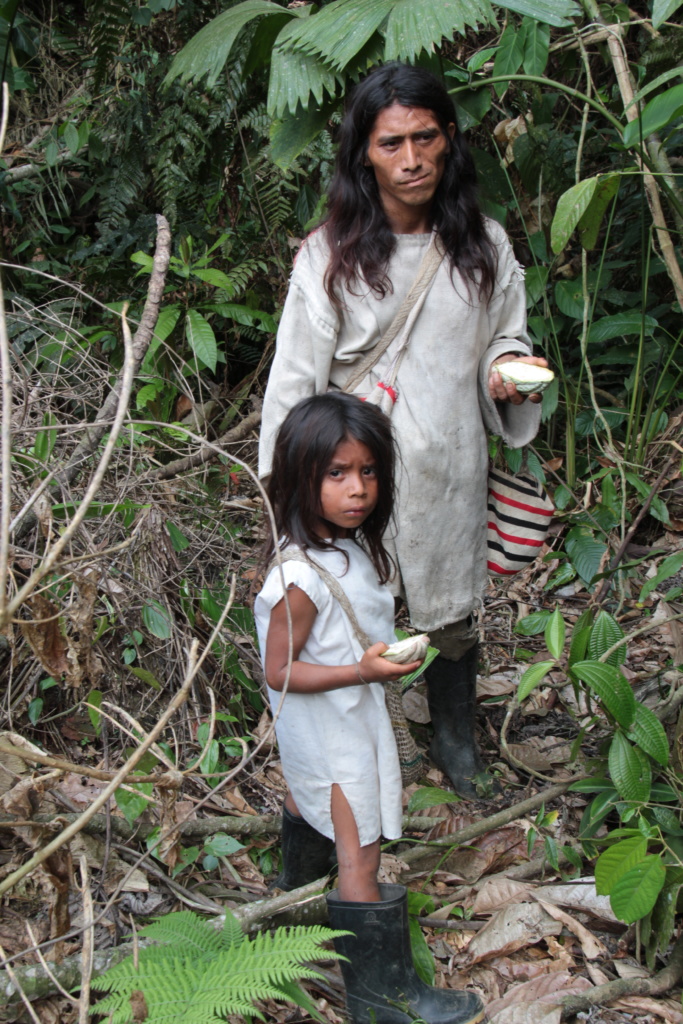About our cacao
The scientific name of the cacao tree is Theobroma Cacao, a small tropical tree typically reaching about 3 meters in height. It boasts large, bright green leaves and thrives naturally in the shade under the canopy of taller trees.
The cacao tree produces an abundance of tiny flowers, as many as 50,000, covering its trunk and main branches. However, only a fraction—approximately 15 to 25—of these flowers will successfully develop into cacao pods each year.
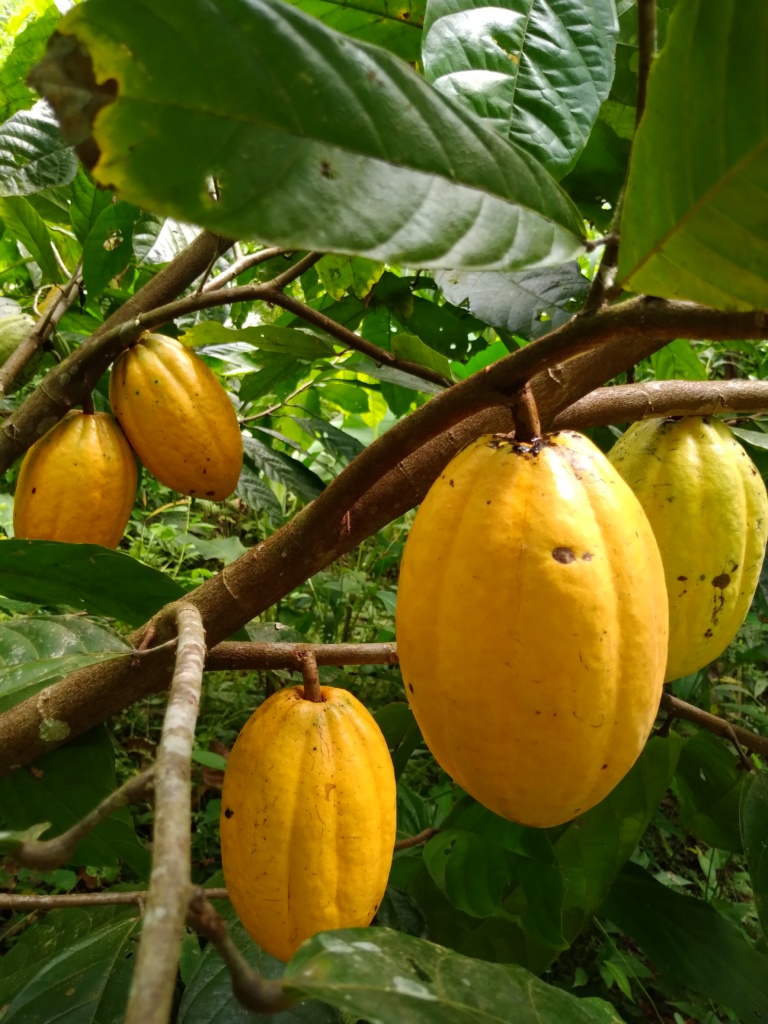
According to modern research, cacao’s origins trace back to the tropical jungles of the Amazon basin in South America. From there it travelled up to Meso America, being reverred by multiple peoples and civilizations along the way.
The Maya, for instance, were early adopters of cacao’s potential, grinding its seeds and mixing them with water to create a beverage known as “chocol-haa”. Similarly, the Aztec referred to it as “cacahuatl”, which translates to “bitter water”.
Both cultures valued cacao seeds not only for their culinary uses but also as a form of currency. For them money did grow on trees!
Our cacao: Criollo Porcelana
Criollo Porcelana cacao is considered one of the finest and rarest varieties of cacao in the world, prized by chocolate makers and connoisseurs for its unique flavor profile and limited availability.
The name “Porcelana”, or porcelain, refers to the color of its seeds, which are totally white or white with slightly pink. Its origins are south of the Lake of Maracaibo in Venezuela; I speculate that it reached the Sierra Nevada de Santa Marta through indigenous exchange of past millenniums.
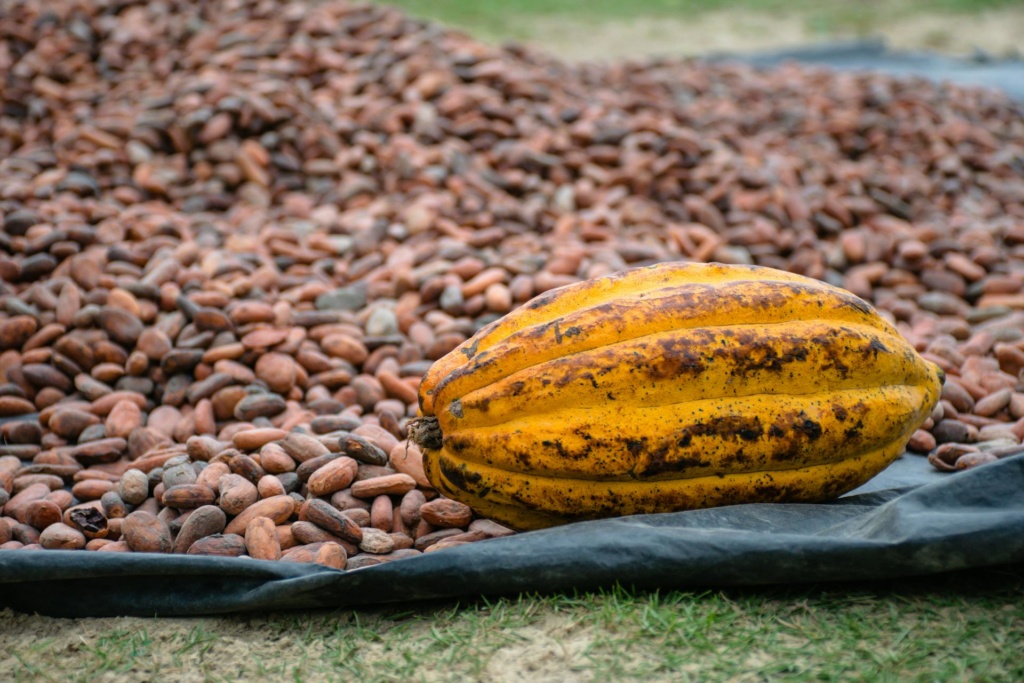
Several factors contribute to its special status:
- Flavor Profile: Criollo Porcelana beans are known for their exceptionally complex and nuanced flavor profile. They often exhibit notes of floral, fruity, and nutty flavors, with hints of caramel and spices. The taste is often described as mild, with low bitterness and acidity, allowing the subtle flavors to shine through.
- Rareness: Criollo Porcelana cacao trees are rare and fragile, making up only a small percentage of the world’s cacao production. They are susceptible to diseases and pests, resulting in lower yields compared to other cacao varieties. This rarity contributes to their exclusivity and high value.
- Genetic Purity: Criollo cacao is one of the three main varieties of Theobroma cacao, the others being Forastero and Trinitario. Criollo Porcelana is a sub-variety known for its genetic purity, meaning it has not been extensively crossbred with other varieties. This purity is believed to contribute to its unique flavor characteristics.
- Growing Conditions: Criollo cacao trees thrive in specific environmental conditions, typically in regions with rich, well-drained soil, consistent rainfall, and a stable climate. They are often found in countries with tropical climates such as Venezuela, Peru, and Madagascar.
- Processing Methods: The way Criollo Porcelana beans are harvested and processed can also influence their quality. Careful fermentation and drying processes are essential to develop their flavor profile while preserving their delicate characteristics.
- Chocolate Quality: Criollo Porcelana beans are often used by premium chocolate makers to produce high-quality chocolate bars and confections. The beans’ unique flavor profile allows chocolatiers to create exquisite chocolates with distinctive taste experiences.
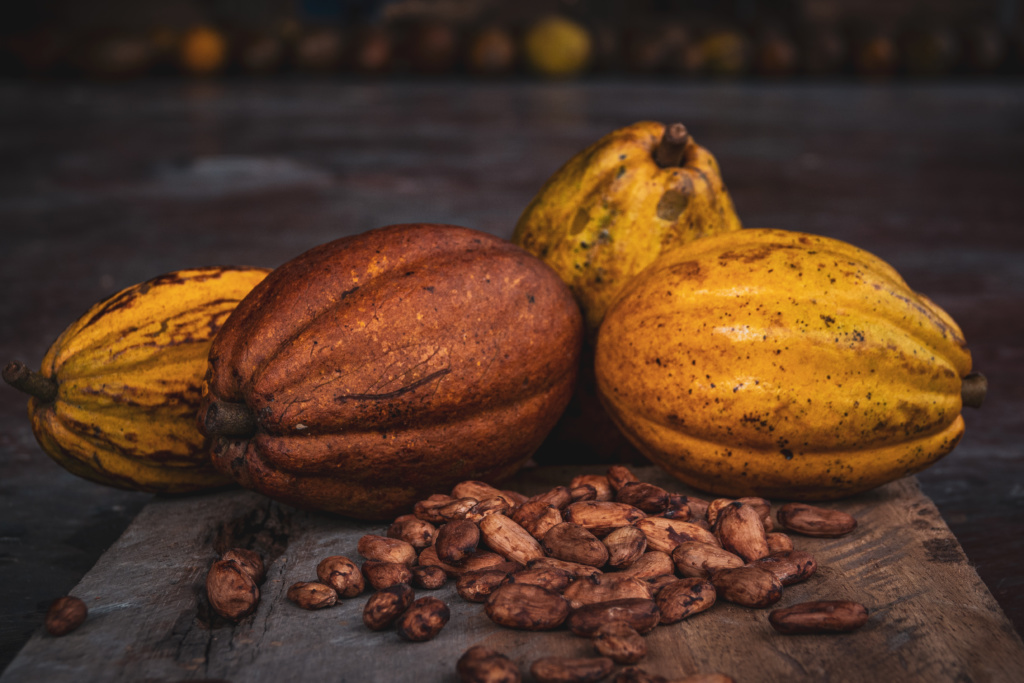
Overall, the combination of rareness, genetic purity, exceptional flavor, and meticulous processing methods contributes to the special status of Criollo Porcelana cacao in the world of chocolate.
Indeed, it is thanks to these characteristics that we can produce chocolates with a high percentage of cacao (70% and up), without the need of adding excessive amounts of sugar or dairy products to improve the final flavor. This way the chocolate still maintains its health benefits, as well as the medicinal and aphrodisiac properties present in pure cacao.
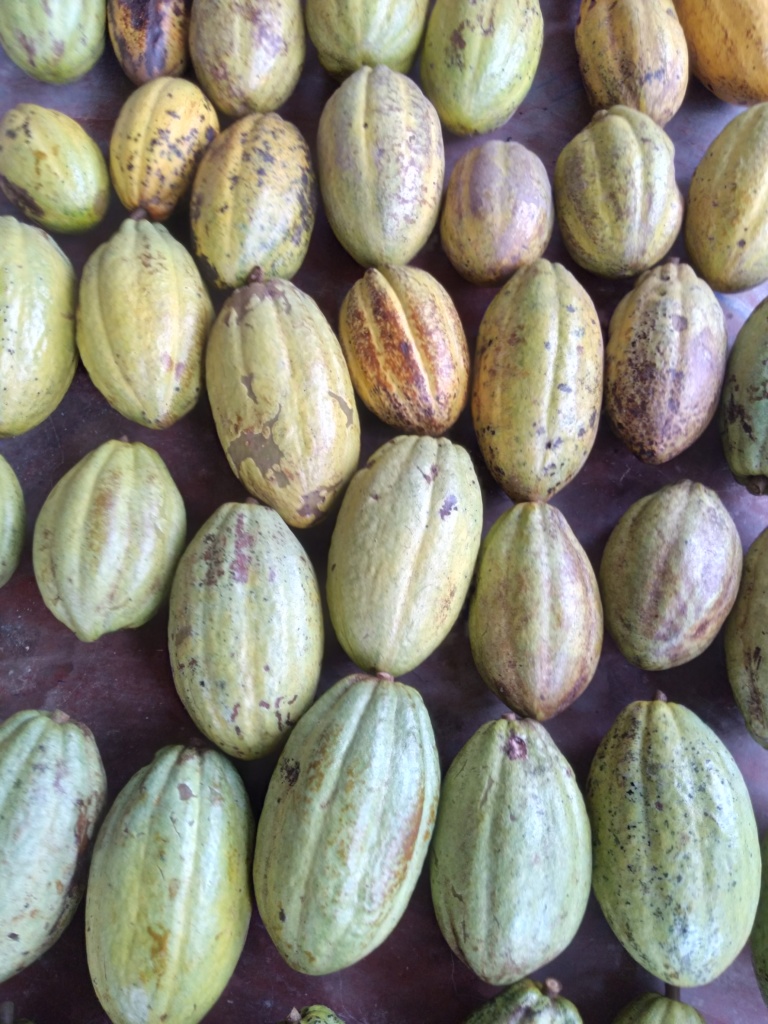
Our search for the seed . . .
Our search for the seeds of Cacao Porcelana took us deep into the Sierra Nevada de Santa Marta. Despite people of the region telling us that they had never seen or heard of white cacao, we never lost hope.
I knew from sharing with my Hopi friends in Arizona, that native peoples of the continent of America always had long and well established routes for the exchange of goods. I figured that cacao could not have been the exception, since it played such an important part in the Mayan and Aztec empires not only as the Drink of the Gods but also as currency.
Since Cacao Criollo Porcelana originates less than 200 kilometers away, at south of the Lake of Maracaibo in Venezuela, I had a strong belief that we would find the seeds. It was our Kogui friends who helped us find it, they called it “Cacao Silvestre”. This cacao is the source of all our trees here on the finca, a true Criollo Porcelana!
